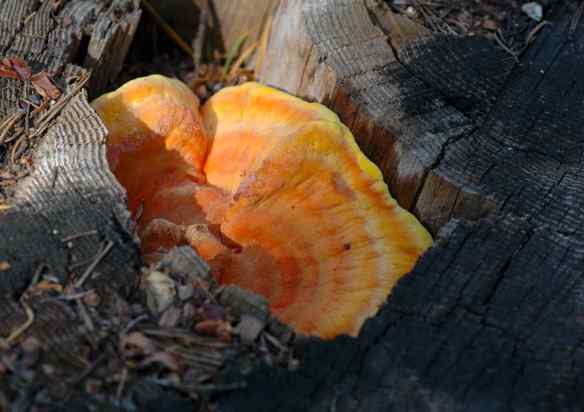I know my last mushroom post left you wanting more, so here they are: the fungi of field season 2014.
Monthly Archives: February 2015
Do birds have a sense of smell?
Not too long ago, the generally-accepted answer to this question would have been: “Not really—a few birds do, but most don’t.” This was largely based on the observation that most birds have very small olfactory bulbs in their brain relative to their overall brain size. As we observe bird behavior, however, we are are increasingly realizing that most birds can and do use smell regularly, often for very important things.
Let’s begin with the birds that have been known for a long time to use smell. Kiwi birds are unique in having their nostrils on the end of their bills, rather than close to the base of the bill like all other birds. Kiwis stick that long bill into the soil and use their nostrils to sniff for insects and worms.
It makes a lot of sense that kiwis have a good sense of smell, even if you think that birds in general don’t, because kiwis seem to have evolved to be the avian version of a small fuzzy mammal. Kiwis evolved on the islands of New Zealand, where the only mammals were bats. The small-brown-fuzzy-nocturnal-snuffling-in-the-dirt-for-worms niche was open for the taking, and kiwis—flightless, nocturnal, and covered in long thin feathers that are highly reminiscent of hair—took it. A good sense of smell goes with that niche.
Summer mountain flowers
The beauty and the beast; or, a tale of two moles
The Beauty
Technically, golden moles are not true moles—they are more closely related to tenrecs than they are to true moles—but golden moles are small, burrowing, insect-eating mammals that, with their streamlined heads and powerful digging claws, have converged to look a lot like true moles.
With at least one key difference: golden moles shine. They shimmer. They iridesce.

Juliana’s golden mole. It’s a bit hard to see the iridescence in photographs, but it’s there. Photo from ARKive.
The hairs on a golden mole reflect light in such a way to give the animal a sheen, ranging in color from gold to green to purple. In the museum where I work, we have some preserved specimens of golden moles, and they are remarkable to see: their fur shines and shimmers like the coat of a child’s stuffed toy unicorn.



